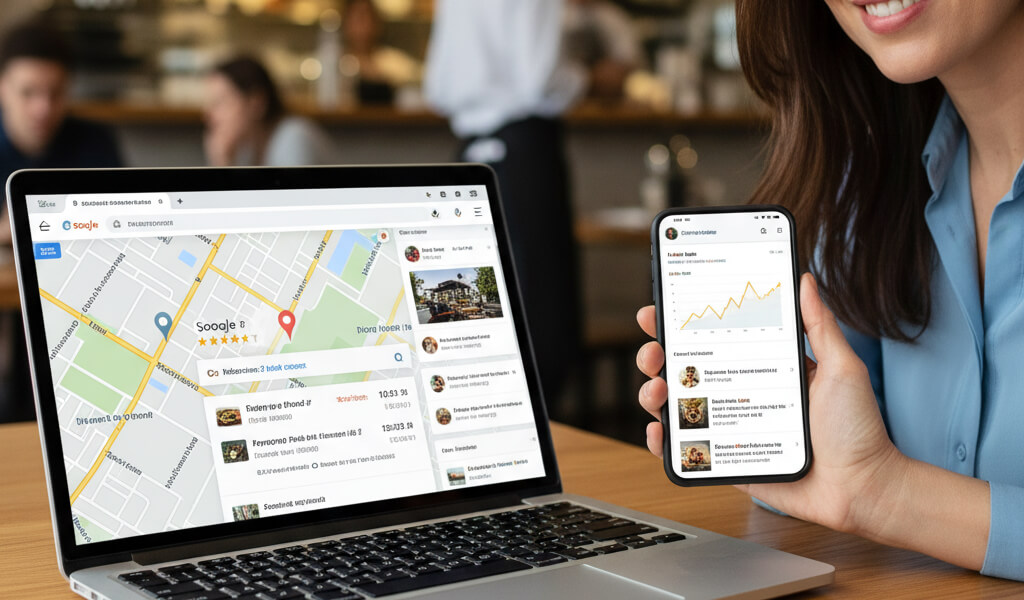October 01, 2025

In today’s digital-first dining landscape, local customers don’t just stumble upon your restaurant—they search for it. Whether they're looking for "best tacos near me" or "romantic dinner spots in [city]," the restaurants that show up first are the ones that win the business.
That’s where Local SEO (Search Engine Optimization) comes in. Done right, it helps your restaurant rise to the top of search results, drive more foot traffic, and increase online orders. Here's a breakdown of seven powerful, practical SEO strategies tailored specifically for restaurants—along with expert insights from RocketPages.
Your Google Business Profile (GBP) is often the first touchpoint for hungry customers. A well-optimized listing can directly drive reservations, orders, and walk-ins.
Related resource: Cut the Middleman: Future-Proof Your Restaurant with Direct Website Inquiries
External guide: DoorDash Merchant Blog – Local SEO Tips
To get found in local searches, your website content must include geo-targeted keywords that match how people search.
Related insight: Dining Trends in 2025 Every Restaurant Owner Should Know
External reference: ChowNow – Local SEO for Restaurants
NAP stands for Name, Address, Phone Number—and consistency is critical. If search engines find mismatched information about your restaurant, your rankings can take a hit.
Related reading: The Ultimate Restaurant Website Checklist: From Menus to Mobile UX
External reference: Webyking Blog – Local SEO for Restaurants
Positive reviews improve trust and visibility in both search rankings and customer decisions.
Related reading: The Restaurant Marketing Funnel: How Your Website Brings Diners to Your Door
External reference: TripAdvisor – How Reviews Impact SEO
Backlinks (when other websites link to yours) help boost domain authority and improve search rankings—especially when those links are from trusted local sources.
Related insight: How to Future-Proof Your Restaurant with a Strong Online Presence
External resource: DoorDash Blog – Local SEO Strategies
With the majority of restaurant searches happening on phones, your website must be fast, mobile-responsive, and easy to navigate.
Related resource: The ROI of a Restaurant Website: What Owners Need to Know
External guide: TouchBistro – Restaurant SEO Tips
While social media doesn’t directly affect SEO rankings, it amplifies content, increases brand searches, and strengthens local visibility.
Related insight: Why Link-in-Bio Isn’t Enough: The Case for Restaurant Websites
External reading: Search Engine Journal – SEO for Restaurants
SEO is no longer optional—it’s a must-have for restaurants trying to compete in a search-first world. By focusing on local optimization, reviews, backlinks, and mobile performance, you’ll not only rank higher in search engines—you’ll also drive more diners through your doors.
Stay up to date with the latest tips, expert insights, product reviews, and step-by-step guides to help you grow, create, and succeed—no matter your industry or passion.